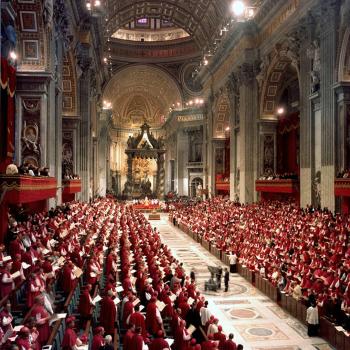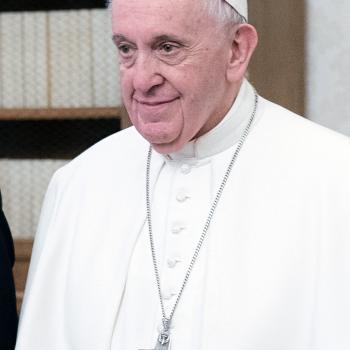At the end of the first visit of Pope Francis to the United States, we should remember that his Holiness came to us by way of Cuba.
And coming by way of Cuba, his travels might remind us of the shared historical experience of the United States and those Spanish-speaking lands south of the border, lest our attention to those borders only be fixed on making them more rigid.
Centuries before, in 1674-5, another bishop, Gabriel Diaz Vara Calderon, Bishop of Cuba, came to our territory to visit some outlying regions of his province—in lands we now call Alabama, Georgia, South Carolina, and Florida. That’s right: spiritual leadership for many souls in Alabama came from Cuba. Those Franciscan missions followed upon the first Jesuit proselytizing in Spanish North America, in Florida in the 1560s. From the 1570s on Spanish Franciscans established missions around the Gulf of Mexico and up the Atlantic coast, even one near to what became Jamestown, Virginia. The seventeenth-century bishop came to serve his flock in those North American outposts, peripheries to a center in Havana, by his own estimate administering confirmation to over 13,000 Indians.
In the current pontiff’s first trip to the U.S., much was made of his identity as a figure from the new world, the first Latin American Pope. As expected, the Pope addressed some new-world issues, including immigration. Rather than propounding particular policies in his address to Congress, the Pope addressed attitudes, calling for compassionate attention to immigrants’ faces and voices. Appropriately so, since immigration debates at popular levels focus not so much on policy specifics as on attitudes, anxieties provoked by Spanish-speaking migrants’ places in institutions, jobs, and communities here.
Some anxieties might be legitimate, but a regrettable source of illegitimate ones is historical misunderstanding, forgetfulness of the long role of Spanish-speaking Americans here. Large parts of our country were shaped not first, or not primarily, by English-speaking colonists but by Spanish-speaking settlers who left in their wake place names and foodways and devotional habits as enduring marks of their work in shaping these United States.
We should mark this momentous papal visit by moving forward with a few reforms, not only in the way we deal with immigrants practically, but also in the way we integrate them in the American imagination.
Three items:
First, American-history education should do due diligence to Spanish-colonial formation of many parts of the United States. Both in regions still distinctly marked by Spanish settlers’ experience (say, California) and those where traces are much fainter (Alabama), the period of Spanish presence should figure significantly in self-understanding. Part of the solution could be supplied by more robust instruction in state histories within U.S. history curricula. Another step toward getting our America right is the winsome approach of Felipe Fernández-Armesto, who demonstrates that Hispanic history is our American history.
Second, American kids should learn Latin American history, at least as a survey, at least for a year, because proximity, foreign policy, and culture make it useful to know. Too many of us go about with woeful ignorance about our neighbors.
Third, the spectacle of non-Catholics cheering a new-world Pope should pique the curiosity of those unacquainted with the story of Catholicism and American freedom or insufficiently disgusted by the current of anti-Catholicism long in circulation here. The influence of Catholicism is not only a nineteenth-century immigrant phenomenon but enters with the thirteen original colonies. That means you, Maryland, but also eighteenth-century Urusline sisters in Mobile and New Orleans, plus clusters of Catholics elsewhere in the colonies, often facing hostility. Recent discoveries hint that there may even have been a Catholic presence in Jamestown.
Maybe the continued goodwill of the “Francis Honeymoon” could enable such steps.












